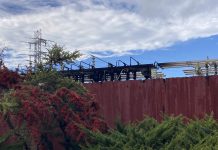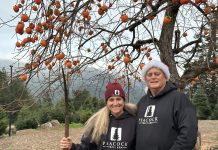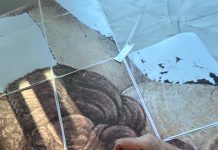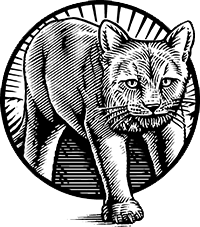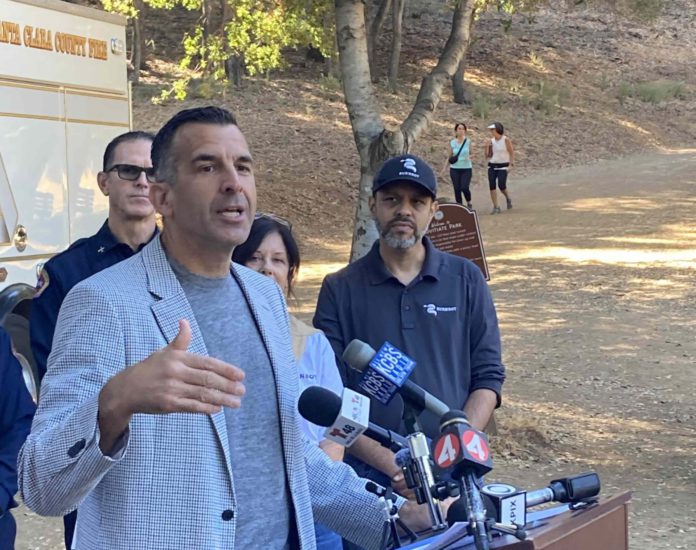
In the preface to his book “California: A Fire Survey,” Stephen J. Pyne notes that the “California fire scene” has long shaped the broader American agenda.
“For the national narrative the important fact is that what happened in California did not stay in California,” he wrote. “Ideas immigrated to California, underwent a transformation, often a radical simplification, and then emigrated outward. For many regions of the United States one can tell the local fire story with minimal reference to the country overall. That isn’t possible in California.”
And on Aug. 20, during a press conference at a trailhead just up the hill from downtown Los Gatos, one of the community’s representatives on the federal stage, Congressman Sam Liccardo, joined with local political, business and fire officials to write a new chapter in the wildfire story.
“We are at the wildland-urban-interface—as we affectionately call the WUI—which presents enormous hazards, enormous peril,” he said. “My mom just grew up a couple blocks away.”

The event was held at Novitiate Park to mark the establishment of the Wildfire Resilience Partnership, a regional effort to promote strategies to defend against forest fires.
On Monday, PG&E reported that nearly 5,900 wildfires have burned more than 397,000 acres across California, this year.
Among the attendees were Mayor Matthew Hudes, Santa Clara County Fire Department Battalion Chief Skylar Thornton, Santa Clara County FireSafe Council CEO Seth Schalet, and neighbor Jak Van Nada, of the Los Gatos Community Alliance, Councilmembers Maria Ristow and Mary Badame, Vice Mayor Rob Moore, Town Manager Chris Constantin and Town of Los Gatos Emergency Manager Chris Todd, who helped to organize the event.
Liccardo said a proactive approach to tackling wildfire is important now that Washington is “stepping back” from many of its funding commitments.
“We are deeply concerned out here in California, because I think we understand what the data shows all of us, and the peril that it poses,” he said. “More and more local communities are on their own trying to figure it out. And fortunately, we’ve got a local community here that has been working together. This regional partnership is nothing new. We are simply bringing the federal government into it.”
He praised the FireSafe Council for its work, so far.
“We think there’s opportunities to elevate their work in various ways,” he said, suggesting this could take the form of collaboration on things like getting environmental clearance for critical projects, securing permits and amplifying the impact of local projects to a regional level. “One way or another, we are going to be at the front of the line. And the communities that are ready for this funding are the ones that get the funding and move first.”

Battalion Chief Thornton said, while it’s been a cool season overall so far in this neck of the woods, there are still warm and windy days ahead.
“One of the things we know for certain is that our Mother Nature is unpredictable,” he said. “We’ve seen devastating fire throughout the state—and the West—over the years, and the lessons learned in the aftermath are helping the fire service prepare.”
Cal Fire recently updated its fire danger maps, using a science-based approach, which has allowed homeowners to have a better sense of just how at-risk they are, he added.
“ If you live in the wildland-urban-interface—or the WUI, one of the areas with heightened fire hazards—you are not powerless,” he said. “There are simple steps you can take to prepare your home and increase the odds of surviving it, even if a wildfire strikes your neighbor.”
The press conference also highlighted N5 Sensors, an AI-based early-smoke-detection system, and featured a demonstration of the remote-controlled BurnBot Vegetation Masticator.
Meanwhile, cyclists and hikers continued to pass by along the trail.
Before the gathering wrapped-up, Liccardo went to Van Nada’s house, to point out things residents can do to harden their homes against wildfire.
“It’s tremendous that the congressman chose to do this here,” said Mayor Hudes in an interview. “Choosing a location where a home is right next to the dangerous W-U-I is important and illustrates what you have to do—and what you can do.
“We will be needing federal funds, but we’re gonna need to do that on a collaborative basis with other communities.”


